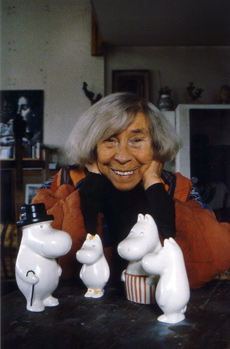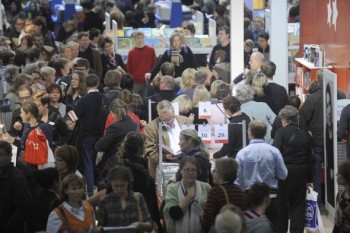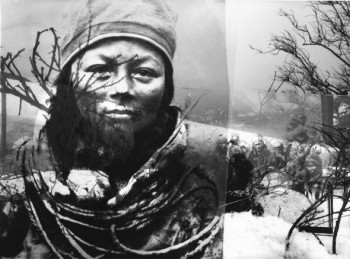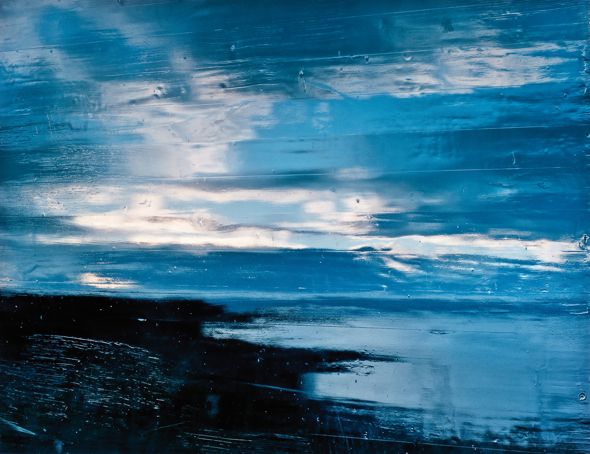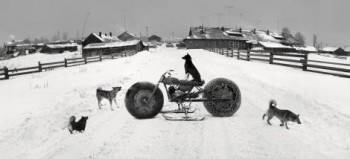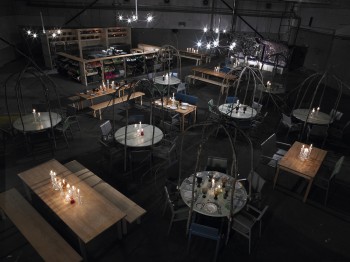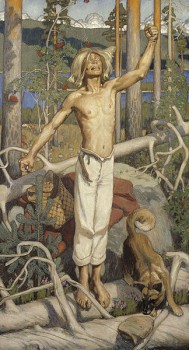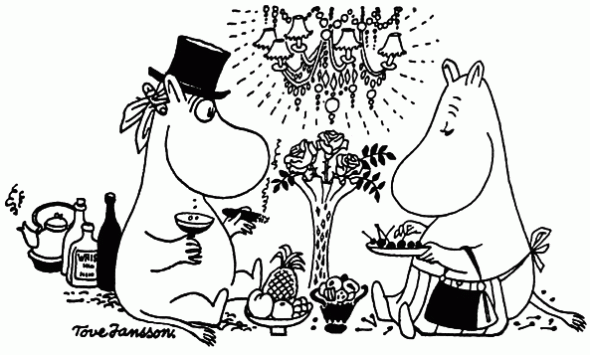Author: The Editors
The legacy of a self-made man
29 October 2010 | This 'n' that
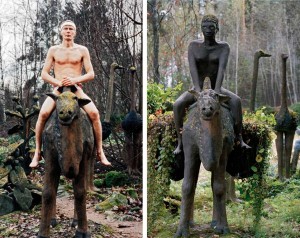
On camelback: in the exotic part of Veijo Rönkkönen’s concrete cosmos there are animals and palm trees, side by side with the living plants of the northerly latitudes. - Photo, left: Veijo Rönkkönen; photo, right: Veli Granö
Some of our readers may remember a story entitled ‘Self-made man’, published in Books from Finland in April 2009: Veijo Rönkkönen, who lived his entire life on a small, isolated farm in eastern Finland, built a garden inhabited by five hundred human and animal figures made of concrete.
Rönkkönen worked in a nearby pulp factory for 41 years. He lived in a small house in the middle of the garden, surrounded by his sculptures, which he had started making in the early 1960s.
Photographer and writer Veli Granö introduced the life and works of this self-made artist in his book Veijo Rönkkösen todellinen elämä / The real life of Veijo Rönkkönen (text in Finnish and English, Maahenki, 2007).
Contemporary folk art in Finland goes by the acronym ITE, from the words itse tehty elämä, ‘self-made life’. The French called it art brut; the English-language term is ‘outsider art’. The artists are ‘unschooled visionaries’ who make their art independent on any societal requirements or definitions.
The sculpture park became the most notable tourist attraction in Parikkala, visited by as many as 26,000 visitors every summer. Rönkkönen, however, refused to turn it into business. He never talked to visitors voluntarily either, but the park was open and free to all. He was awarded a state prize for artistic achievement, the Finland Prize, worth €30,000, in 2007, which he accepted.
Veijo Rönkkönen died last spring at the age of 66. The estate – Rönkkönen’s siblings, living elsewhere in Finland – offered the unique park to the county of Parikkala, which declined the offer because it’s upkeep was estimated to be too expensive.
In October businessman Reino Uusitalo bought the place for €140,000, with the intention of founding an administrative committee for the upkeep of the park. Rönkkönen’s extraordinary ‘total work of art’, will thus stay open – at least until nature – lichen, moss, creepers – claims what it considers it own. 500 sculptures: a self-made man’s open-air art
Hip hip hurray, Moomins!
22 October 2010 | This 'n' that
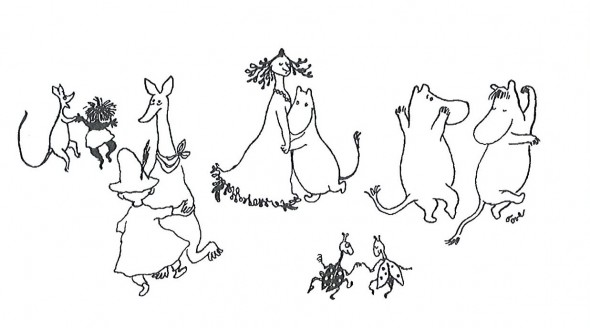
Partying in Moomin Valley: Moomintroll (second from right) dancing through the night with the Snork Maiden (from Tove Jansson’s second Moomin book, Kometjakten, Comet in Moominland, 1946)
The Moomins, those sympathetic, rotund white creatures, and their friends in Moomin Valley celebrate their 65th birthday in 2010.
Tove Jansson published her first illustrated Moomin book, Småtrollen och den stora översvämningen (‘The little trolls and the big flood’) in 1945. In the 1950s the inhabitants of Moomin Valley became increasingly popular both in Finland and abroad, and translations began to appear – as did the first Moomin merchandise in the shops.
Jansson later confessed that she eventually had begun to hate her troll – but luckily she managed to revise her writing, and the Moomin books became more serious and philosophical, yet retaining their delicious humour and mild anarchism. The last of the nine storybooks, Moominvalley in November, appeared in 1970, after which Jansson wrote novels and short stories for adults.
Tove Jansson (1914–2001) was a painter, caricaturist, comic strip artist, illustrator and author of books for both children and adults. Her Moomin comic strips were published in the daily paper the London Evening News between 1954 and 1974; from 1960 onwards the strips were written and illustrated by Tove’s brother Lars Jansson (1926–2000).
Tove’s niece, Sophia Jansson (born 1962) now runs Moomin Characters Ltd as its artistic director and majority shareholder. (The company’s latest turnover was 3,6 million euros).
For the ever-growing fandom of Jansson there is a delightful biography of Tove (click ‘English’) and her family on the site, complete with pictures, video clips and texts.
The world now knows Moomins; the books have been translated into 40 languages. The London Children’s Film Festival in October 2010 featured the film Moomins and the Comet Chase in 3D, with a soundtrack by the Icelandic artist Björk. An exhibition celebrating 65 years of the Moomins (from 23 October to 15 January 2011) at the Bury Art Gallery in Greater Manchester presented Jansson’s illustrations of Moominvalley and its inhabitants.
In association with several commercial partners in the Nordic countries Moomin Characters launched a year-long campaign collecting funds to be donated to the World Wildlife Foundation for the protection of the Baltic Sea. Tove Jansson lived by the Baltic all her life – she spent most of her summers on a small barren island called Klovharu – and the sea featured strongly in her books for both children and adults.
Helsinki Book Fair: 28–31 October
22 October 2010 | In the news
The tenth Helsinki Book Fair takes place in Helsinki’s Exhibition & Convention Centre over the last weekend of October. More than 1,000 writers, artists, scientists, politicians and specialists will participate in the programme. There are more than fifty authors from 17 countries, among them the British historian Antony Beevor, the Estonian writer Jaan Kaplinski and the Indian writer Kishwar Desai.
The theme country this year is France, and among the French guests will be the novelists Andreï Makine and Nicolas Fargues, the fantasy writer Pierre Pével and the poets Sophie Loizeau, Hélène Sanguinetti and Gabriel Mwènè Okoundji, originally from Congo.
The translator Anne Colin du Terrail will talk to the writers Leena Lehtolainen and Johanna Sinisalo whose work she has translated into French.
Comics and graphic novels as well as poetry are also in the focus at this year’s Book Fair: approximately 70 Finnish and foreign poets feature in readings, interviews and nonstop performances.
In 2009 a record-breaking number of visitors – almost 77,000 – attended the Book Fair. It seems the autumnal Fair is a handy chance to many to buy Christmas presents, among other things; at least last year three out of four said they had come to buy books (and not just spot celebrities, for example).
This time, in addition to books, the visitors to the Exhibition & Convention Centre will be able to attend two other Fairs, entitled Wine, Food and Good Living and Music Fair as well.
Best-selling books in September
15 October 2010 | In the news
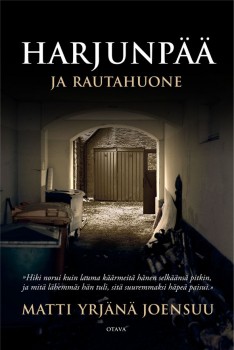 In September, Finns read crime novels. Matti Yrjänä Joensuu’s latest book featuring his police protagonist Timo Harjunpää, Harjunpää ja rautahuone (‘Harjunpää and the iron room’, Otava), topped the Booksellers’ Association of Finland’s best-seller list.
In September, Finns read crime novels. Matti Yrjänä Joensuu’s latest book featuring his police protagonist Timo Harjunpää, Harjunpää ja rautahuone (‘Harjunpää and the iron room’, Otava), topped the Booksellers’ Association of Finland’s best-seller list.
Joensuu’s Harjunpää ja pahan pappi was published in English in 2006 and reissued in 2008 under the title Priest of Evil. A film adaptation will be released in Finland in late October, directed by Olli Saarela and starring Peter Franzén in the title role.
Number two was the latest thriller from the pseudonymous Ilkka Remes, Shokkiaalto (‘Shock wave’, WSOY), and number three was Leena Lehtolainen’s Minne tytöt kadonneet (‘Where have all the young girls gone’, Tammi).
Sofi Oksanen’s record-breaking seller and critical success Puhdistus (WSOY; English edition: Purge, Atlantic Books) held strong in fourth place.
In translated fiction, Paul Auster, Diana Gabaldon ja Paulo Coelho headed the list.
The non-fiction list was topped by a study of sociability and social skills by Liisa Keltikangas-Järvinen (Sosiaalisuus ja sosiaaliset taidot, WSOY). Readers seem to be interested in survival, as the number two book was in a similar vein, Lilli Loiri-Seppä’s Selviämistarinoita (‘Stories of coping’ – also translatable as ‘Stories about getting sober’, Gummerus), about how to stop drinking.
Walt Disney was missing again from the top of the children’s list, the number one and number two spots being taken by Finnish picture books, Tatu ja Patu supersankareina (‘Tatu and Patu as superheroes’, Otava) by Aino Havukainen and Sami Toivonen, and Hurja-Harri ja pullon henki (‘Scary Harry and the genie in the bottle’, Otava) by the veteran graphic artist and children’s book author Mauri Kunnas. A new installment of the Ella storybook series by Timo Parvela, Ella ja Yön ritarit (‘Ella and the Knights of the Night’, Tammi) held the number three spot. In September, Finns read crime novels. Matti Yrjänä Joensuu’s latest book featuring his police protagonist Timo Harjunpää, Harjunpää ja rautahuone (‘Harjunpää and the iron room’, Otava), topped the Booksellers’ Association of Finland’s best-seller list.
Icy prospects
8 October 2010 | This 'n' that
Photographer Jorma Puranen (born 1951) has long been concerned with nature and the representation of northern landscapes, particularly Lapland, as well as light and its reflection.
One of his most famous projects is Imaginary Homecoming. In the 1990s, on a visit in the Musée de l’Homme in Paris, he found some old archive boxes full of glass negatives. They were ethnographical images of the Sámi, taken by G. Roche, employed by the French Count Bonaparte on an expedition to Lapland in 1884.
Puranen took them back to the wildernesses of Lapland and photographed them once more in their native surroundings, where they became a photographic installation in the tundra. He published them in his book Kuvitteellinen kotiinpaluu / Imaginary Homecoming (Pohjoinen, 1999).
Puranen’s 2006 series Icy Prospects explores landscape: the large pictures are made by painting wood with black gloss paint, reflecting the landscape on the wood and photographing the reflection.
Snow, ice, water, sky and trees are portrayed the way that brings Impressionism to mind, as Liz Wells writes in her introduction in the book entitled Icy Prospects, published by Hatje Cantz (Germany, 2009).
A new exhibition of Jorma Puranen’s work from 1992 to 2010, at EMMA, the Espoo Museum of Modern Art, opened on 29 September; it runs until 9 January 2011. Partly retrospective, it features Puranen’s techniques of chromogenic colour and black and white photography, showcasing his highly original style.
European Union literature prizes 2010
8 October 2010 | In the news
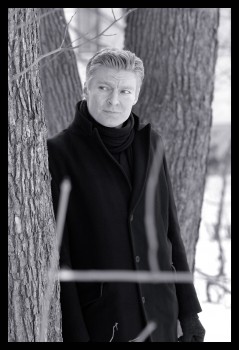
Riku Korhonen. Photo: Harri Pälviranta
With his novel Lääkäriromaani (‘Doctor novel’, Sammakko, 2009), Riku Korhonen (born 1972) is one of the 11 winners of the 2010 European Union Prize for Literature, worth €5,000 each. The winners were announced at Frankfurt Book Fair on 6 October.
The European Commission, the European Booksellers’ Federation (EBF), the European Writers’ Council (EWC) and the Federation of European Publishers (FEP) award the annual prize, which is supported through the European Union’s culture programme. It aims to draw attention to new talents and to promote the publication of their books in different countries, as well as celebrating European cultural diversity. Authors who have published two to four prose works during the last five years and whose work has been translated into two foreign languages at the most are eligible for the prize.
Korhonen has published two novels, a collection of short prose and a collection of poetry. Read translated extracts, published in Books from Finland in 2003, from his first novel, Kahden ja yhden yön tarinoita (‘Tales from two and one nights’, 2003) here. More…
Dog days
30 September 2010 | This 'n' that
How does he do it? The dogs pose in Pentti Sammallahti’s photographs like professional models who know how to keep still.
Sammallahti admits sausages and sardines sometimes help communication.
In 1998, in the old, printed version of Books from Finland, we published a selection of Sammallahti’s photographs, together with some written impressions by the British photographer and essayist John Berger. According to him, people who first see the selection of Sammallahti photographs he has, ‘usually gasp at first, and then peer closer, smiling,’ as they seem to remember something they knew as children, but which they have forgotten how to see – from the times ‘we talked to the dogs, listened to their secret and kept it to ourselves.’
Sammallahti (born 1950) is one of the pioneers of the Finnish photographic art and fine art printing, which he has also taught at the University of Industrial Arts and Design in Helsinki.
Specialising in black-and-white photography of people and their environment, Sammallahti has travelled extensively throughout Russia and Siberia, France and Finland. This autumn his work is featured in a retrospective exhibition at the Finnish Museum of Photography in Helsinki; you can see a selection of his photos here.
Just business?
24 September 2010 | Letter from the Editors
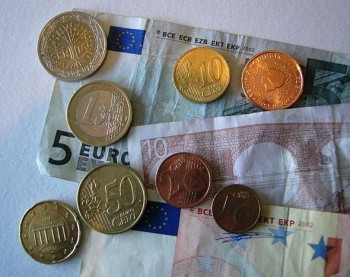
Money, money, money... Photo: Twid/Wikipedia
Through his work, a writer provides a living for both himself and his publisher. The publisher makes his profit through the work of his writers, and both parties are satisfied. Is this how it goes?
The novel Puhdistus (Purge, 2008) by the Finnish author Sofi Oksanen (born 1977) has been translated into 13 languages, including English, and by now it has sold who knows how many copies.
One would imagine her publisher would like to live happily ever after with his superstar, and perhaps also vice versa – for WSOY (est. 1878) has long been one of the most powerful, as well as the most enlightened, publishing houses in Finland. More…
HEL YES!
24 September 2010 | This 'n' that
Run that by me again, please?
Oh: HEL is the airport abbreviation of Helsinki, and the second word completes the title given to a pop-up restaurant set up by a team of Finnish designers and chefs in London. It takes place at 1–3 Wenlock Road, London N1, between 15 September and 3 October.
HEL YES! is commissioned and produced by the Finnish Institute in London as part of its Arts & Culture Programme, in anticipation of Helsinki’s role as World Design Capital in 2012.
The restaurant offers inventive Finnish dishes, the dinner service plates are mix ‘n’ match vintage Iittala and the diners sit on Alvar Aalto and Artek’s ‘403’ chairs painted in a new range of colours.
We hear the reservations for dinner are now been fully booked, but coffee and drinks are available in the restaurant, a former depot. See what the press said, here.
Kullervo: to be, or not?
10 September 2010 | Articles, Non-fiction
A young man is born a slave under stars that augur ill for him. He is maltreated and betrayed from birth. He cannot control his physical power, his aggression or his thirst for revenge and, finally, after fatal errors and deliberate acts of violence, his remaining desire is to die. What, in the end, did life hold for him?
The cruelly tragic story of Kullervo in the Kalevala was largely the creation of the national epic’s compiler, Elias Lönnrot (1802–1884), who put together a number of originally unconnected folk-epic fragments collected in disparate localities throughout the north and east of Finland. This process involved many stages and went on for decades. The first version was published in 1835; for a shorter version for schools in 1862 Lönnrot cut the most violent and erotic scenes – including those involving Kullervo and his sister in an incestuous encounter. More…
What was Finland reading this summer?
2 September 2010 | In the news
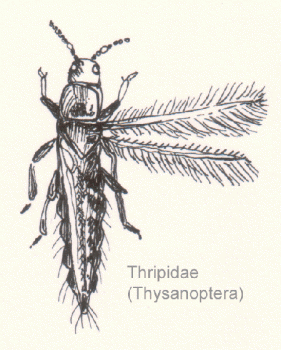 Novels, thrillers and comics were on the June–July list of best-selling books according to the Booksellers’ Association of Finland.
Novels, thrillers and comics were on the June–July list of best-selling books according to the Booksellers’ Association of Finland.
And, as the popular poet, MP, novelist and television celebrity Tommy Tabermann (born 1947) died in June, his collected poems, Runot 1970–2010 became number one of the list.
Sofi Oksanen’s highly popular novel Puhdistus (Purge) has kept itself on the list for a long time, was now at number three. Tuomas Kyrö’s humorous novel about a man in his 80s, Mielensäpahoittaja (‘Taking offense’) was at number seven, Pertti Jarla’s Fingerpori 3 at number eight and Leena Lander’s new novel Liekin lapset (‘Children of the flames’) at number ten.
The top ten list of translated fiction included works by Jo Nesbø, Charlaine Harris, John Irving, Donna Leon and Dagsson Hugleikur.
During the summer there’s clearly enough time for nature observations: The Cloudspotter’s Guide by Gavin Pretor-Pinney, a work presenting birds’ sounds and a book on bugs and creepy crawlies were among the ten best-selling non-fiction books.
Dark, cold – yet happy?
27 August 2010 | This 'n' that
 In the fields of education, health, quality of life, economic dynamism and political environment, the best country in the world is… Finland.
In the fields of education, health, quality of life, economic dynamism and political environment, the best country in the world is… Finland.
According to the American Newsweek magazine (August 15), Finland is now the best place to live – if you appreciate the factors of life mentioned above. On the list of a hundred countries, Switzerland and Sweden were numbers two and three. More…
Translation prize
27 August 2010 | In the news
This year the Finnish Government Prize for Translation of Finnish Literature – worth € 10,000 – was awarded to the poet, translator, linguist and literary critic Rami Saari who translates into Hebrew.
Saari (born 1963) has studied and taught Hebrew, Semitic languages and Finno-Ugric Language Studies at universities in Helsinki, Budapest and Jerusalem. He has been the editor of the Israeli section of the international poetry website poetryinternational.org since 2002 and has edited a book series for Ha-kibbutz hameuchad which publishes predominantly Nordic and Baltic literature.
Saari, who has also published seven collections of his own poetry, now lives in Athens. He has also translated Albanian, Spanish, Catalan, Greek, Portuguese, Hungarian and Estonian fiction.
Among the Finnish writers Saari has translated are Daniel Katz, Eeva Kilpi, Eino Leino, Veijo Meri, Timo K. Mukka, Sofi Oksanen, Arto Paasilinna, Raija Siekkinen, Eeva Tikka, Sirkka Turkka and Mika Waltari.
Rami Saari received his award in Helsinki on 25 August from the minister of culture and sports, Stefan Wallin. The prize has been awarded by the Ministry of Education and Culture since 1975 on the basis of a recommendation from FILI – Finnish Literature Exchange.
French prize for Sofi Oksanen
26 August 2010 | In the news
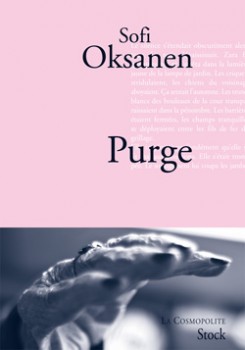 In August the ninth Prix du Roman FNAC was awarded to Sofi Oksanen (born 1977) for her novel Puhdistus (English translation, by Lola Rogers: Purge; see a recent British review [Guardian, August 21] here), to be published in French (by Editions Stock) on August 25 under the title Purge. This is the first time FNAC – the largest bookshop chain in France – has awarded the prize to an author who doesn’t write in French.
In August the ninth Prix du Roman FNAC was awarded to Sofi Oksanen (born 1977) for her novel Puhdistus (English translation, by Lola Rogers: Purge; see a recent British review [Guardian, August 21] here), to be published in French (by Editions Stock) on August 25 under the title Purge. This is the first time FNAC – the largest bookshop chain in France – has awarded the prize to an author who doesn’t write in French.
The jury consists of 900 booksellers and representatives from the general public. They read 300 novels published in France this year, and the winner was chosen out of 30 finalists.
The Finnish production company Solar Films Inc. will transform Puhdistus into a film in 2012: the screenwriter is Marko Leino.
Moomin food
19 August 2010 | In the news
A cookbook that introduces Tove Jansson’s famous Moomin family and other characters from the delightful classic stories for children (and adults), with original illustrations and quotations from the Moomin books, has been published in the UK.
Entitled Moomins’ cookbook. An introduction to Finnish cuisine (translated by David Hackston and published by SelfMadeHero), the book was compiled and written by Sami Malila and published in Finnish in 1993 (WSOY).
The Moomins are also currently being celebrated in an exhibition at the Design Shop UK in Edinburgh, entitled ‘And the World Went Mad for Moomins’. The exhibition runs until September 5.
Translations of books by Tove Jansson (1914–2001) have been published in more than 30 languages.
The cookbook offers recipes of healthy porridges and fish dishes, mushrooms and fresh berries, as well as treats like one of the Moomins’ favourites, pancakes (often cooked in the oven) with jam and whipped cream.
And as this is a cookbook for the whole family, Moominpappa’s grog contains no alcohol – but it’s no secret he enjoys a drop of good whisky (see the picture) every now and then, and a good cigar.

